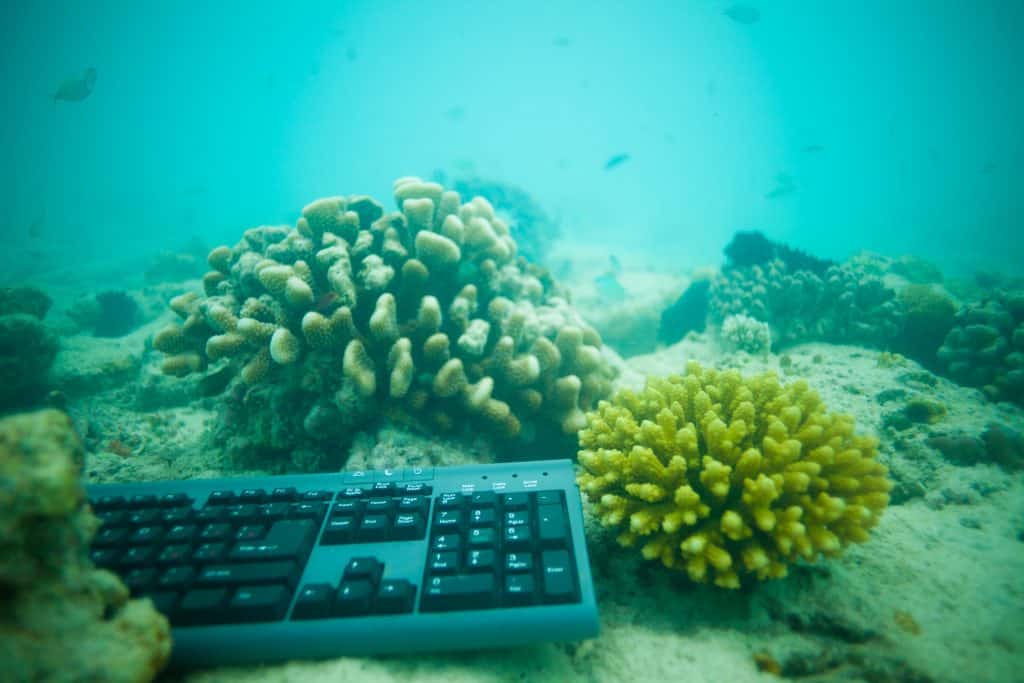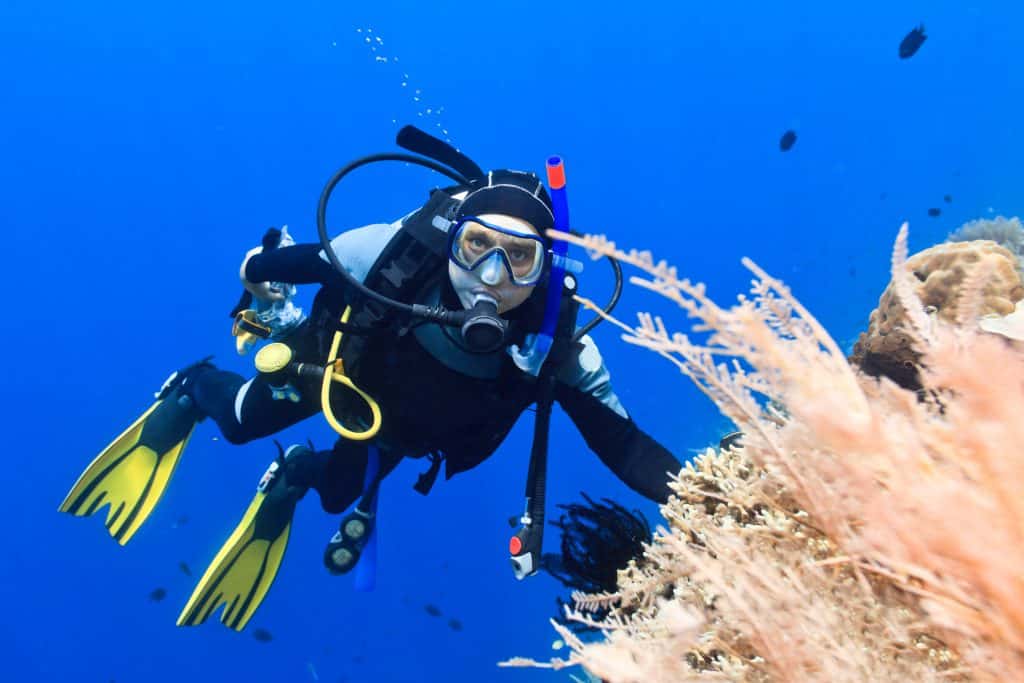Air Integrated Dive Computer or Not?
Air integration on dive computers are getting a more common sight as they get cheaper and the technology has gotten more reliable. We’ve compiled the arguments on whether or not you should look at an air integrated dive computer or not.

Do you need to get an Air Integrated Dive Computer or is that Overkill?
A lot of divers have very different opinions on whether to use an air integrated dive computer. Should you use one then the next question is whether you want the integration with a hose or hoseless.
Let’s have a look at the different options below and get into the advantages and disadvantages of having an air integrated scuba computer.
If you’re interested in buying such a device then check out our guide to finding the best air integrated dive computer.
What is an Air Integrated Dive Computer?
The most common method to measure the pressure in your tank is to use a pressure gauge. An air integrated computer has a link to your tank to measure the remaining air/nitrox.
Modern scuba computers will not just measure the tank pressure but based on the current depth, exertion level, and data from the dive it will calculate how much time you have remaining under these conditions. The data is usually also recorded in the logbook so you can analyze it later on your PC.
When you analyze the data on your computer, you can also get the air consumption adjusted to the surface air consumption (SAC) rate. Over time, you should see this rate decrease which means you improve your air consumption.
How to Connect the Dive Computer to your Tank?
The choices whether to use an air integrated dive computer are unfortunately not over. Next you need to decide whether you want to connect through a hose or hoseless.
Hose Connection
Using a hose to connect your dive computer to your tank is basically the same method you’d use when you have a pressure gauge. A hose is used to connect your first stage. This works well for console-mounted devices but not for wrist-mounted scuba computers.
The advantages are that it’s a fairly simple setup. The hose connects to a pressure outlet on the first stage and the air pushed into the hose is used to measure the pressure in the tank. Basically, only mechanical elements are involved in this kind of setup except for the sensor in the dive computer that translates the pressure into digital information to display on the screen.
The downside is that those mechanical components can wear out. The high-pressure hose can rupture, the o-rings leak, etc. Last but not least, you have highly pressurized air go into a sensor in your dive computer which can break. Chances are that if something breaks, it will be the part in the dive computer and it might render it useless.
Hoseless Link – Wireless Air Integration
A hoseless link means that your dive computer connects wirelessly to a pressure sensor on a high-pressure port on the first stage. Using such a wireless air integration is a very elegant solution as it works for both wrist dive computers and console-mounted ones.
What is great about using such a hoseless dive computer is that you don’t have to deal with a hose between your dive computer and your tank. There’s nothing to rupture and you also don’t have a pressure sensor being part of your dive computer which can break and destroy your dive computer.
That’s it for the good things about this connection. There are also a few downsides. First, it can happen that the data connection between the dive computer and the transmitter on the tank gets lost. At that moment, you won’t get data to your dive computer. The lost signal usually won’t last long. That can make it an annoyance. If the signal can’t be established again, you’d have to cancel the dive!
But there’re more issues than just a lost signal. Both the dive computer and the transmitter need batteries. And as luck often has it, the batteries might dive during a dive or when you’re traveling somewhere. Depending on the dive computer and transmitter you might get standard batteries or you might have to send your dive computer into a service center to have the battery changed!
A last issue with a wireless setup is also that you pay a lot more than you’d pay for a dive computer with a hose or a system where you have a dive computer and a pressure gauge. And yes, you pay more! The good thing is that you can usually buy the dive computer and the wireless transmitter separately. This allows you to start with the dive computer and then add on the transmitter at a later time when you’re ready for it.
Wireless links are overall reliable yet it is disturbing when the signal is lost. In the rare cases that the signal can’t be established again, it becomes the best choice to cancel your dive. Usually, this is safe to do as you had the air readings up to a minute or so ago.
An interesting fact is also the difference in how the pressure in the tank is measured. The hose connection uses a brass and glass pressure gauge. The wireless transmitter usually uses a. electronic transducer. You need not be at MIT to see that the electronic version ends up being more accurate!
Another advantage, if you want to call it that, is that a wireless transmitter will usually fail catastrophically making it very clear to the diver it’s not working anymore. A hose can slowly have small leaks and measure the data wrong. It can take much longer for you to find out you have a problem as it’s not necessarily obvious!
There are a number of top rated dive computers that come with air integration. For most wrist mounted dive computers the air integration is optional as the transmitters usually are not included in the base package. The console mounted scuba computers connect through a hose so they have the air integration as part of their setup. You can check out our comparison and ranking of the best scuba dive computers by clicking this link.
Final Thoughts
So, what is it? – Air integrated dive computer or not?
The answer is not that straightforward. If you go with an air integrated dive computer, then it’s best to use a wireless setup. It’s more convenient and if you check your batteries regularly and change them when they show signs of fading then you should be fine. If the transmitter breaks then you can replace it with a new one or in the worst case you have a non-air integrated dive computer.
Many divers do still prefer to use a pressure gauge to measure the air in the tank. It’s reliable, and it is cheaper than a wireless air integrated system. The accuracy is better in the air integrates setup though and being able to analyze your air consumption after a dive gives you a good sign of where and how you can improve your consumption.
Besides those technical pros and cons it will come down to preference. It might just be the best choice to get a dive computer that can later be extended with a transmitter. Until then use a pressure gauge to measure your air until you feel ready to switch. It saves you money right now and the pressure gauge will always be useful even if only as a backup.




